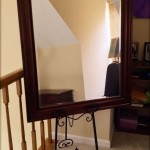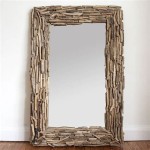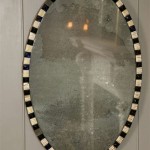Screen Mirroring iPad onto Samsung TV
Screen mirroring allows users to display the content of an iPad's screen onto a larger display, such as a Samsung TV. This feature offers a convenient way to share photos, videos, presentations, and other content with a larger audience or enjoy media on a bigger screen. This article explores the various methods available for mirroring an iPad to a Samsung TV, outlining the steps involved and highlighting potential troubleshooting tips.
Methods for Screen Mirroring
Several methods exist for mirroring an iPad to a Samsung TV, each with its own advantages and disadvantages. Choosing the optimal method often depends on the specific models of iPad and Samsung TV, as well as available network infrastructure.
Using AirPlay with Apple TV
AirPlay is Apple's proprietary wireless streaming technology. This method requires an Apple TV connected to the Samsung TV's HDMI port. AirPlay offers a seamless and high-quality mirroring experience, particularly for streaming high-definition video and audio.
Steps for AirPlay Mirroring:
- Ensure both the iPad and Apple TV are connected to the same Wi-Fi network.
- Open Control Center on the iPad by swiping down from the top right corner of the screen.
- Tap the "Screen Mirroring" icon.
- Select the Apple TV from the list of available devices.
Using Third-Party AirPlay Apps on Samsung Smart TVs
Some Samsung Smart TVs now offer built-in support for AirPlay 2, eliminating the need for an Apple TV. This integration allows direct mirroring from the iPad to the TV. Check your Samsung TV's specifications to confirm AirPlay compatibility.
Steps for Mirroring with AirPlay 2 on Samsung TVs:
- Ensure both the iPad and Samsung TV are connected to the same Wi-Fi network.
- Open Control Center on the iPad by swiping down from the top right corner.
- Tap the "Screen Mirroring" icon.
- Select your Samsung TV from the list of available devices.
Using Screen Mirroring Apps
Various third-party screen mirroring apps are available in the App Store that offer compatibility with certain Samsung Smart TVs. These apps often leverage existing network connections to facilitate mirroring. Researching app reviews and compatibility information is recommended before downloading and using these apps.
Steps for Using Mirroring Apps:
- Download and install a compatible screen mirroring app on the iPad.
- Ensure both the iPad and the Samsung TV are connected to the same Wi-Fi network.
- Follow the instructions within the specific app to initiate the mirroring connection.
Using HDMI Adapters and Cables
A wired connection offers a reliable and stable mirroring solution, especially for environments with unreliable Wi-Fi. This method requires a Lightning to HDMI adapter for the iPad and a standard HDMI cable.
Steps for Wired Mirroring:
- Connect the Lightning to HDMI adapter to the iPad's charging port.
- Connect one end of the HDMI cable to the adapter and the other end to an available HDMI port on the Samsung TV.
- Select the correct HDMI input source on the Samsung TV.
Troubleshooting Common Issues
Several common issues can arise during the screen mirroring process. Understanding these issues and their potential solutions can help users resolve problems quickly.
Network Connectivity Problems
Ensure both the iPad and the Samsung TV are connected to the same Wi-Fi network. Restarting the router and devices can often resolve connectivity issues. Verifying network password accuracy is essential.
Software Updates
Keeping both the iPad's iOS and the Samsung TV's firmware updated to the latest versions can ensure compatibility and optimal performance. Check for available updates in the device settings.
Incompatible Devices
Confirm that the chosen mirroring method is compatible with the specific iPad and Samsung TV models. Consulting the manufacturer's documentation or support websites can provide compatibility information.
Audio Issues
If audio isn't playing through the TV, check the volume levels on both the iPad and the TV. Verify that the correct audio output is selected on both devices. For wired connections, ensure the HDMI cable is securely connected.
Display Resolution
Adjusting the display resolution on the iPad can sometimes resolve mirroring issues. This can typically be done in the iPad's display settings. Experimenting with different resolutions may improve the mirrored image.
Restarting Devices
A simple restart of both the iPad and the Samsung TV can often resolve minor software glitches that may be interfering with the mirroring process.

Top 4 Methods To Mirror Ipad Samsung Tv

How To Mirror An Ipad A Samsung Tv

Top 4 Methods To Mirror Ipad Samsung Tv

Top 4 Methods To Mirror Ipad Samsung Tv

How To Mirror An Ipad A Samsung Tv

How To Mirror An Ipad A Samsung Tv

Ipad Screen Mirroring Not Working Quick Solutions Here

How To Screen Mirror Iphone Samsung Tv Ios Airbeamtv

How To Mirror An Ipad A Samsung Tv

Top 4 Methods To Mirror Ipad Samsung Tv








